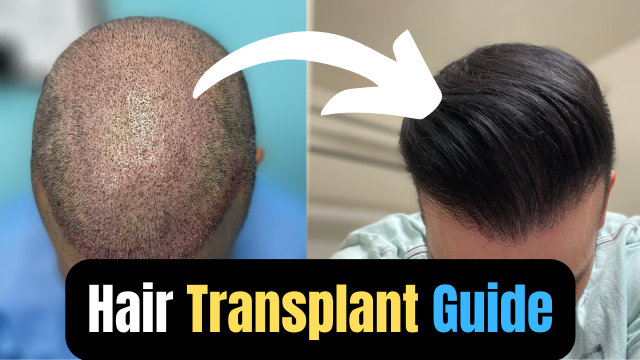Hair transplant surgery can be a highly effective solution for hair loss, but it's important to have a good understanding of the procedure before making a decision. Here is a comprehensive guide to help you navigate the hair transplant process.
- Choose a qualified surgeon: Your hair transplant's success depends on your surgeon's skill and experience. Look for a board-certified hair restoration surgeon with a proven track record of successful transplants. It's also important to look at before-and-after photos to get an idea of the surgeon's work.
- Consider the type of transplant: There are two main types of hair transplant procedures: Follicular Unit Transplant (FUT) and Follicular Unit Extraction (FUE). FUT involves removing a strip of the scalp and transplanting the hair follicles, while FUE involves removing individual hair follicles from the scalp. Discuss with your surgeon which method is best for your specific needs.
- Choosing a Surgeon: The success of your hair transplant depends on the skill and experience of your surgeon. Look for a Hair Transplant Network-certified hair restoration surgeon who has a proven track record of successful transplants. The Hair Restoration Network (HRN) can help you find a qualified hair restoration surgeon in your area.
- The Consultation: During the consultation, your surgeon will examine your scalp and hair, and ask you about your hair loss history and goals for the procedure. They will also discuss the different hair transplant options available, including Follicular Unit Transplant (FUT) and Follicular Unit Extraction (FUE).
- Be realistic about results: No hair transplant can guarantee 100% growth or a specific number of hairs, and results can vary from person to person. Be realistic about the expected results, and ask your surgeon to provide you with examples with patients that have similar hair loss patterns and hair characteristics i.e., fine straight hair.
- Aftercare: After the transplant, it's important to take good care of your scalp to ensure the best results. Your surgeon will provide you with instructions on how to care for your scalp, which may include avoiding direct sunlight, wearing a hat, and avoiding strenuous exercise.
- Use a trusted resource to research surgeons: If you're considering a hair transplant, it's important to use a trusted resource to help you make informed decisions. The Hair Restoration Network (HRN) is a great resource for patients seeking information about hair transplant surgery. HRN provides information about hair restoration surgery, including procedures, costs, and the qualifications of hair restoration surgeons.
- Results: It may take several months for the results of your hair transplant to become visible, and full growth takes up to a year. Be patient and follow your surgeon's aftercare instructions to ensure the best results.
Following these tips and using resources like HRN can increase your chances of getting the best hair transplant results. Good luck!

